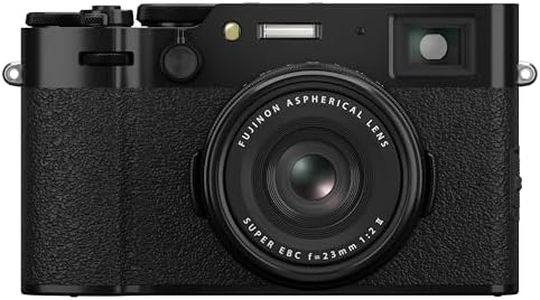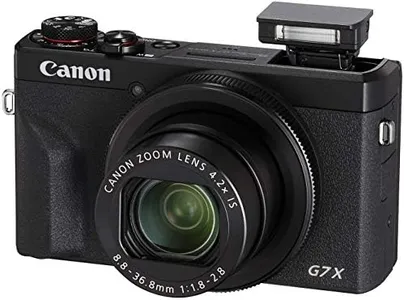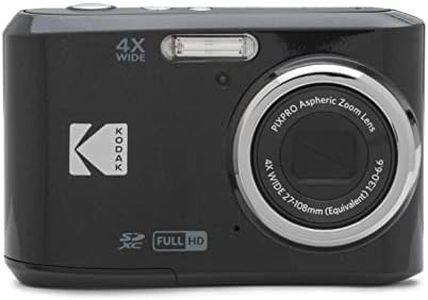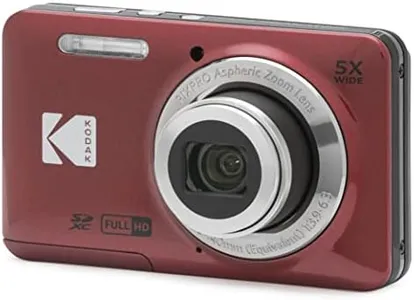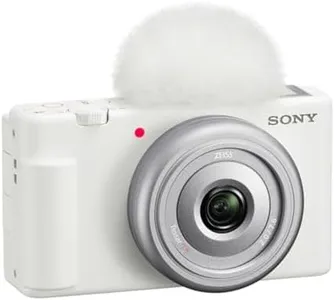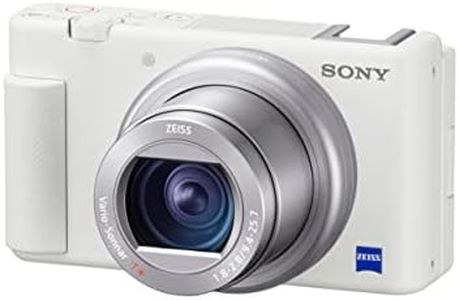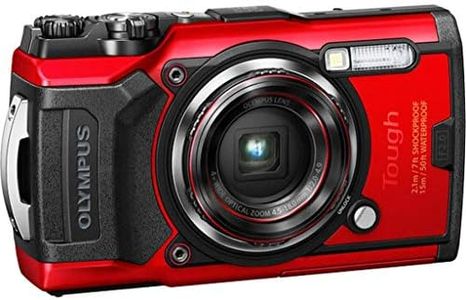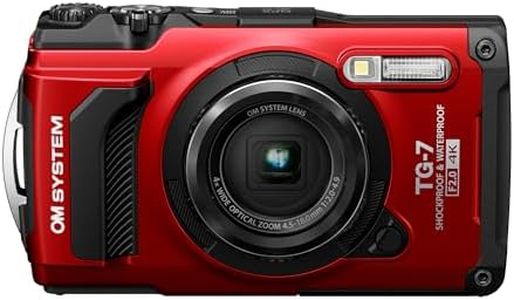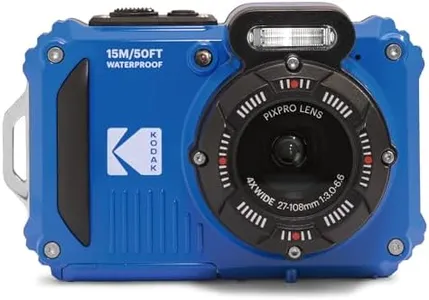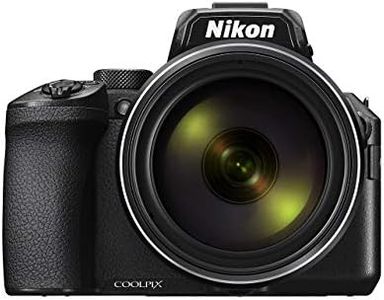We Use CookiesWe use cookies to enhance the security, performance,
functionality and for analytical and promotional activities. By continuing to browse this site you
are agreeing to our privacy policy
10 Best Digital Point Shoot Cameras
From leading brands and best sellers available on the web.Buying Guide for the Best Digital Point Shoot Cameras
Selecting a digital point-and-shoot camera involves understanding your photography needs and the key features that will help capture everyday moments without the complexity of more advanced cameras. Point-and-shoot cameras are great for those who want a compact, easy-to-use device that delivers good image quality with minimal manual adjustments. When comparing models, you should focus on specifications that impact image quality, ease of use, and portability to find the camera that best fits how and where you plan to use it.Sensor SizeSensor size refers to the physical dimensions of the camera’s image sensor, which affects image quality, especially in low light. Larger sensors can capture more detail and produce better results in challenging lighting, while smaller sensors keep cameras compact and lightweight. The most common sensor sizes in point-and-shoot cameras are 1/2.3-inch, 1-inch, and sometimes larger. If you prioritize maximum image quality and better performance in various lighting, aim for a larger sensor. If you want something ultra-compact and are satisfied with decent daytime shots, a smaller sensor may be enough.
MegapixelsMegapixels measure the resolution the camera can capture, but beyond a certain point, more megapixels do not always equal better photos. For standard prints and sharing online, anything between 12 to 20 megapixels is generally sufficient. Only go higher if you plan to crop photos a lot or make very large prints; otherwise, don’t be swayed by higher numbers alone.
Zoom Range (Optical Zoom)Optical zoom lets you get closer to your subject without losing image quality. Cameras often advertise a certain 'x' zoom, like 5x or 30x. Lower zooms (like 3x-5x) are fine for everyday portraits and travel, while higher zooms (10x-30x or more) are better for wildlife, sports, or distant scenes. Consider what you plan to photograph most often. If you shoot mainly family moments or city trips, a moderate zoom keeps the camera small and easy to handle, whereas adventure or landscape photographers might want a greater zoom range.
Image StabilizationImage stabilization reduces blurriness caused by hand movements, especially in lower light or when using zoom. Some cameras offer optical stabilization, some digital, and some both. Optical stabilization is generally more effective. If you expect to shoot indoors, in low light, or at full zoom, look for strong image stabilization. If most of your photos are outdoors in good light, this may matter less.
Autofocus SystemAutofocus helps you get sharp photos quickly. Some cameras only have basic autofocus, while others include features like face detection, subject tracking, or fast focusing for moving subjects. If you expect to photograph kids, pets, or action, look for a camera with advanced autofocus features. For landscapes or still subjects, a basic system works well.
Display (LCD Screen)The LCD screen is used for composing and reviewing photos. Key differences include screen size and whether the screen can tilt or rotate. Larger and brighter screens help you see better outdoors, and articulating screens are useful for selfies and shooting at odd angles. Choose based on how much you’ll use the camera for group shots, selfies, or video.
Size and WeightOne of the benefits of point-and-shoot cameras is their portability. Ultra-compact models fit in a pocket, while those with bigger zooms or sensors tend to be bulkier. Think about how often you want to carry the camera and whether you need it to be pocket-sized or are willing to carry something larger for better features.
Battery LifeBattery life tells you how many photos you can take on a single charge. Some cameras can take hundreds of shots, while others may need more frequent charging. If you travel or expect to shoot all day without easy access to charging, prioritize longer battery life. Otherwise, for casual use, average battery performance may be just fine.
Video CapabilitiesMany point-and-shoot cameras record video, with differences in resolution (HD, Full HD, or 4K), frame rates, and special modes like slow-motion. If video is a key reason for buying a camera, look for higher resolutions and extra features like stereo sound or video stabilization. For occasional video clips, standard HD may be enough.
ConnectivityConnectivity features like Wi-Fi or Bluetooth let you transfer photos to your phone or computer without cables. Some cameras also enable remote control from your smartphone. If you love sharing photos instantly or want to back up your images easily, look for models with built-in wireless features. If you don’t mind using memory cards or cables, this may be less important.

